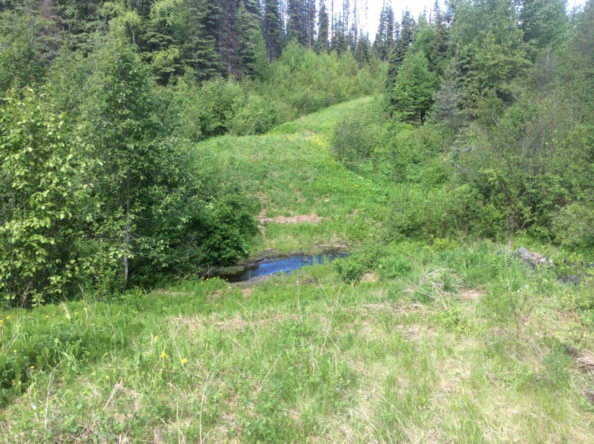 Forest road deactivation places a road in a stable state to prevent erosion and contain sediment, thus protecting adjacent resources such as aquatic habitats and water quality. Deactivation for water management is critical for maintaining surface drainage patterns so they are consistent with natural drainage patterns. A forest road may need to be temporarily deactivated before a period of inactivity, or permanently deactivated when work in the area is finished so that adjacent resources are indefinitely protected.
Forest road deactivation places a road in a stable state to prevent erosion and contain sediment, thus protecting adjacent resources such as aquatic habitats and water quality. Deactivation for water management is critical for maintaining surface drainage patterns so they are consistent with natural drainage patterns. A forest road may need to be temporarily deactivated before a period of inactivity, or permanently deactivated when work in the area is finished so that adjacent resources are indefinitely protected.
A deactivation plan is key to any road deactivation and will guide the expected outcomes. Deactivation success is linked to the planning, communication, understanding, and execution of the plan. Several techniques can be prescribed in a deactivation plan – some of the more common ones include the construction of cross-ditches, waterbars, and dirt berms/barricades for controlling vehicle access.
FPInnovations, in cooperation with BC Timber Sales and the BC Ministry of Forests, Lands, Natural Resource Operations and Rural Development, has produced a new guide that provides equipment operators with guidance for the construction of commonly prescribed road deactivation structures. The guide includes detailed drawings and explanations, and when printed, can be folded as a pamphlet for easy reference on site. To download a free copy of Forest Road Deactivation: Removing Culverts and Installing Cross-Ditches and Waterbars, click here.
FPInnovations has also produced a series of similar guides on the key considerations for the successful implementation of a streambed simulation culvert, including planning and design, culvert installation, streambed material/construction, and monitoring and maintaining a fish-friendly culvert crossing. Find these and many more resources in the online Research Library.
For more information on forest road deactivation or streambed simulation, contact Clayton Gillies.

Removal of a wooden-box culvert during deactivation requires a plan for sediment containment.

A deactivated stream crossing will provide a stable and vegetated approach surface to protect the aquatic habitat and water quality.